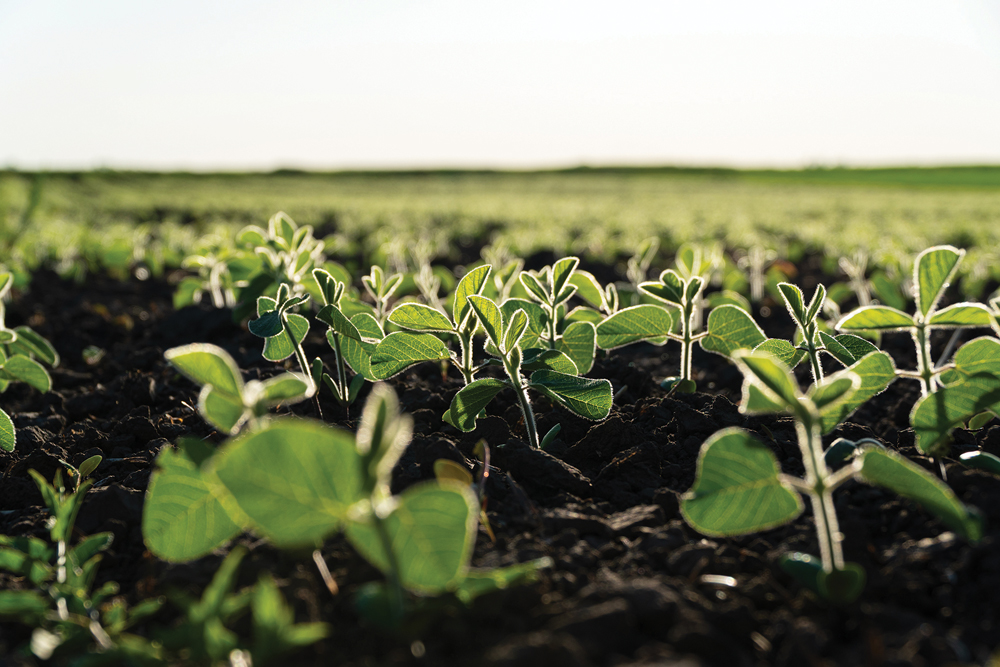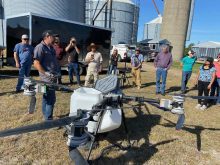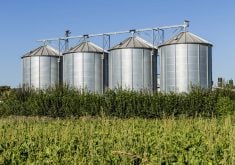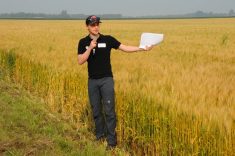Glacier FarmMedia – Not long ago, soybean advocates expected the crop to reach four or five million acres in Western Canada.
After several years of drought, industry experts now say that, while soybeans are still a fit for the Prairies, it’s likely on fewer acres than previous champions have suggested.
“I think Manitoba will probably end up at 1.5 to 1.7 million [acres], long term,” said Dennis Lange, pulse crop and soybean specialist with Manitoba Agriculture. “That’s my thought, with the odd bump years, where you have better prices …. But time will tell.”
Read Also

Manitoba boosts stake in cereals centre to $23.5 million
Premier Wab Kinew said the additional project funds will help ‘Trump-proof’ the provincial economy.
Why it matters: Soybeans saw a meteoric rise in popularity in Manitoba in the last few decades, but typical rainfall patterns on the Prairies don’t always match the crop’s needs.
Lange’s comments arose at the Manitoba Agronomists Conference, held every December at the University of Manitoba. He presented on the evolution of soybean production. Joining him on stage was Horst Bohner, a soybean expert with the Ontario Ministry of Agriculture, Food and Rural Affairs.
Manitoba’s soybean acreage reached a peak of 2.3 million in 2017. That same year, Saskatchewan farmers seeded around 800,000 acres of the crop. Acreage was expected to climb, possibly hitting three million in Manitoba and several million in Saskatchewan.
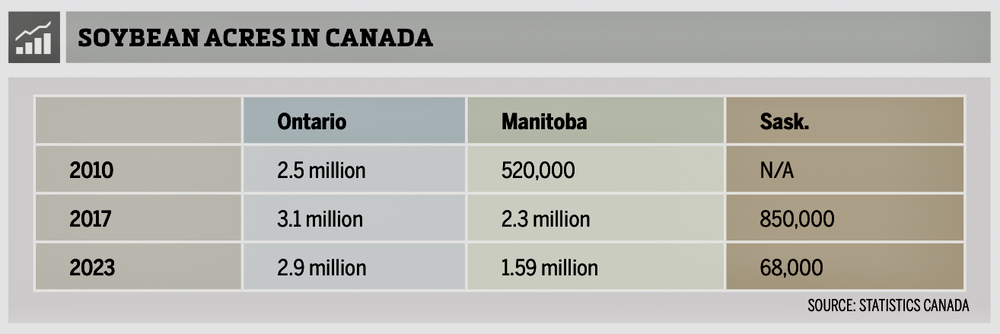
Then drought hit. In a crop that needs rain in late July and into August, the dry years between 2017 and 2019 led to reductions in yield and halted soybean expansion.
Farmers in Saskatchewan and western Manitoba reported yields of 20 bushels per acre or less, leading many to give up on the beans. By this year, Manitoba’s acreage had dropped below 1.6 million acres, although it remains the province’s third-largest crop behind canola and wheat.
“The rest of our cropping structure is set up for that dry August, which is what we usually get,” said Rob Stone, who farms near Davidson, Sask., back in 2022. “But soybeans need the opposite. They’re a nice hedge but, statistically, we get drought conditions at the wrong time for soybeans to work out.”
Climate statistics show that Stone is correct. Estevan, Sask., for example, gets less than half the annual precipitation (454 millimetres) of London, Ont., which gets 961 mm. In Manitoba, Carman averages 545 mm a year.
Bohner and Lange were polite when talking about the potential of soybeans in Saskatchewan, which had an estimated 40,000-60,000 acres this year, but the implied message was that the short growing season and lack of rainfall are massive challenges.
“You have to think about your yield-limiting factor. Soybeans are a sub-tropical species … They are a long-season, warm-season crop,” Bohner said. “The breeders have come a long way, but that is your limitation.”
Agriculture and Agri-Food Canada researchers and university plant breeders have tried to develop soybeans with more tolerance to drought, but it’s been a difficult task, Bohner said.
“Something like 80 per cent of soybean roots are in the top three inches,” he said. “If that is powder dry, you’re not getting anything in that plant. No nutrients … There is no answer to that, other than more water.”
Soybean success
Despite those limitations, soybeans have been a major success story in Manitoba. Around 2009, farmers seeded less than 500,000 acres in the province and average yields were just above 30 bu./acre. In 2022, Manitoba set a record with average yields of 45 bu./acre, close to yield figures from Ontario.
Lange credited 2022’s “almost perfect conditions,” with adequate moisture and little crop stress.
Yields were down this year. It was drier than 2022 in much of Manitoba, and the provincial average will likely be closer to 34 bu./acre, Lange said.
In Ontario, 2023 was a fantastic growing season for soybean growers. They set a provincial record of 53 bu./acre.
Those kinds of yields should encourage more Ontario soybeans in the future but, even there, there are limits. Over the last few years, Ontario farmers have planted about three million acres of beans.
“Can we make it to four million?” Bohner said. “It will take a long time.”
It’s possible that soybeans will steal acres from pasture and hay land, and clearing in northern regions could create more farmland. But Ontario farmers are losing acres to a pervasive trend.
It’s not pest or weed pressure, Bohner said. Nor is it soil erosion or climate change.
“The biggest challenge we have is urbanization.”
The Ontario Farmland Trust estimates that the province has lost 2.8 million acres of agricultural land to urbanization and aggregate mining in the last 35 years.
– Robert Arnason is a reporter for The Western Producer.


